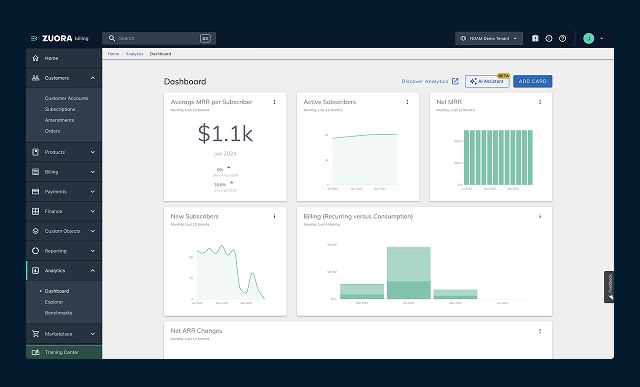For a long time enterprise leaders have been postulating an enterprise model where people make a difference and are at the centre of the value creation of the enterprise. The core belief is simple: a more human-centric enterprise will make people happier, and happier people make happier customers. Happier customers buy more, spend more, return often and so on. This in itself makes the enterprise more successful, allows it to listen and invest more in its people. The logic is convincing, it is a flywheel trend that can be started and keeps going. So why are so few enterprises becoming more human-centric?
THE UNIVERSAL ENTERPRISE MODEL
In order to understand how enterprises operate, let us look at a universal model that is common for all enterprises. At its core, enterprises fall into three different functional chains with the value chain pertinent to the enterprise being the defining one.
• The core of the enterprise: the value chain. This is where the key ideas are and where the magic happens. The enterprise creates something that its customers value from the supply that it has procured to create the value.
• The supply chain defines the possible: the procurement of necessary materials defines the potential of the value creation. Timeliness, quality, cost etc all determine the space in which the enterprise can create value.
• The demand chain is where success is determined: getting customers to use and pay appropriately for the output of the value creation process creates the financial room in which an enterprise needs to operate.
In the mainly capitalistic world that enterprises operate in, they need to create profits in order to invest further in the capabilities of their value chain to build up a separate value chain and a diversification strategy.
At the centre of each value chain though, are people who make decisions that affect the value chain, who operate the key steps in the value chain and who enable the success of the supply and demand chain. People are central to the success of any enterprise. Why have enterprises not become more human-centric?

WHY ENTERPRISES KEEP FAILING
There are numerous reasons why it is hard for enterprises to become human-centric. Here are the most prominent reasons for failure:
• Shareholder value as the only management goal: the optimisation of enterprise outcomes does not have to, but typically does stand in the way of creating a more human-centric enterprise. ‘Hitting the numbers’ is more important than ‘caring for people’.
• Atomic chain optimisation in functional silos: all too often corporate leaders tend to optimise their area of responsibility, often creating unfavourable human outcomes for the other value chain operators. ‘We sold less to give our people a better work/life balance’ is unheard of in businesses today.
• Human ingenuity and adaptability ‘will sort it out’: humans are incredibly smart and adaptable. Leaders typically leave it to middle and low-level managers to sort things out. Leaders fail to realise that they set the framework for lower-level managers determining the degree of humanity in their teams.
• The failure of talent management: the human capital management (HCM) category that was supposed to deliver better people outcomes has over promised and under delivered. If performance management is broken, talent management is broken.
• The fear of investment failure when it comes to your people: people are expensive. People are fickle. Investing in people has uncertain outcomes and requires intestinal fortitude from leaders. But if buying a machine has a higher chance of delivering a return on investment than an investment into human centricity, many leaders will unfortunately lose good people.
A little help from a pandemic
Often portrayed as a joke, but realistically, COVID-19 has done more for digital transformation than many years of strategic projects. Enterprises have been largely able to deliver and grow, despite shut down offices. Anybody remembering the work-from-home debate from a few years back, knows that there is now a clear outcome. And while we may debate if working from home is more human than working in an office, we certainly know that the commute is not human at all. The pandemic has also forced enterprises to rethink their value chain and with that their supply and demand chains. Successful enterprises have done that with a focus on more human outcomes, starting with their customers, focussing on the quality of the working conditions of their people, and lastly also considering the supply side of human experience. It’s necessary to rethink all processes of the enterprise due to the pandemic, and it’s been a massive opportunity to redesign the operation of the enterprise in a way that delivers more human outcomes along all its functional chains.
FOUR STRATEGIES TO BECOME HUMAN-CENTRIC
Here are the top four strategies for an enterprise, from a team and enterprise, as well as an internal and external perspective:
Deliver more human outcomes
With a human-centric approach, teams can be more successful. Focus on what makes customer experience and outcomes better, enable people to foster and deliver better outcomes in the value creation and give people leaders the leeway to create more of a human supply chain.
Reimagine processes with a human first mentality
On an enterprise level, more human-centric processes need to be created and implemented which can only happen with a shift towards human-centricity for the overall enterprise goals and values.
Empower people leaders to deliver more humanity
Make it clear to people leaders that they have the tools and freedom to experiment, validate and implement more human-centric processes for their teams. Team goals need to reflect the more human-centric goals and people leaders need to be empowered to lead the change one team at a time, and thus the whole enterprise.
Create a human-centric operating platform
Infrastructure, tools, processes and renumeration need to be changed from the shareholder model to a human-centric model. Smart CxOs will be able to align both, and thus ensure the necessary shareholder buy-in and backing for a more human-centric enterprise.

HOW TO MAKE IT WORK
Change is always hard, and it almost always involves risk, making it even harder. So, for change agents who want to transform their enterprise to become more human-centric, it is key to argue along well understood costs that can be used to convince the numeric minds that are likely to question the move.
The number one people cost, which is hard to plan and affects the bottom line, is the cost of attrition. Not only is there a cost for talent acquisition by itself, but there are follow up costs in the sense that teams with new members need time to get up to speed. Being able to reduce attrition with a more human-centric enterprise is likely the biggest tangible financial number to justify a portion of those savings to establish a more human-centric enterprise.
More challenging are the attempts to put a growth number to being a more customer-centric enterprise, that focusses on the customer as a human being and creates better customer experiences. But it can be done, otherwise we would not see investments into customer relationship management (CRM). And on the supply value chain, more human-centricity will help to make the supply chain more resilient, with suppliers and the enterprise supply chain delivering on better supply chain outcomes.
THE TAKEAWAYS
The pandemic has forced enterprises to rethink all its three key value chains. Smart enterprises have redesigned them to become more human-centric and are benefitting from this by more satisfied and loyal customers, more motivated and dedicated suppliers, and most importantly, have boosted employee morale and retention with more human-centric operating platforms, and by empowering people leaders to lead their teams in a more human way to better outcomes. For enterprises that do not see the signs, and who do not want to be the drivers and disruptors through adoption of a more human-centric enterprise, there is always the option to be forced by competition to get there, while labouring through higher attrition and fear of overall enterprise disruption. There are exciting times ahead for people across all industries and the pandemic has paved the way for a far more human-centric way of working.






